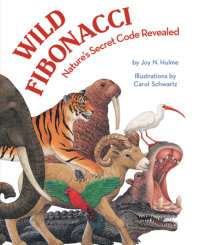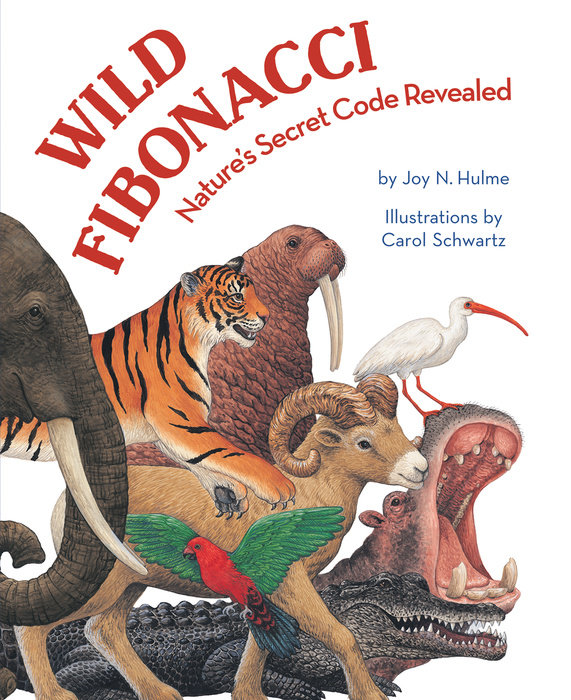Wild Fibonacci
1, 1, 2, 3, 5, 8, 13, 21, 34. . . Look carefully. Do you see the pattern? Each number above is the sum of the two numbers before it. Though most of us are unfamiliar with it, this numerical series, called the Fibonacci sequence, is part of a code that can be found everywhere in nature. Count the petals on a flower or the peas in a peapod. The numbers are all part of the Fibonacci sequence. In Wild Fibonacci, readers will discover this mysterious code in a special shape called an equiangular spiral. Why so special? It mysteriously appears in the natural world: a sundial shell curves to fit the spiral. So does a parrot's beak. . . a hawk's talon. . . a ram's horn. . . even our own human teeth! Joy Hulme provides a clear and accessible introduction to the Fibonacci sequence and its presence in the animal world.
An Excerpt fromWild Fibonacci
In the Fibonacci sequence
each new number comes
from adding up the two before
and figuring the sum.
This number set is used to plot
a graceful curving line
that's often found in nature
as part of its design.
Fibonacci creatures
have a certain body part
which fits the winding, coiling shape
that spirals on this chart.
These parts are most important
the help the beasts survice.
Finding food and fighting foes
can keep each one alive.

